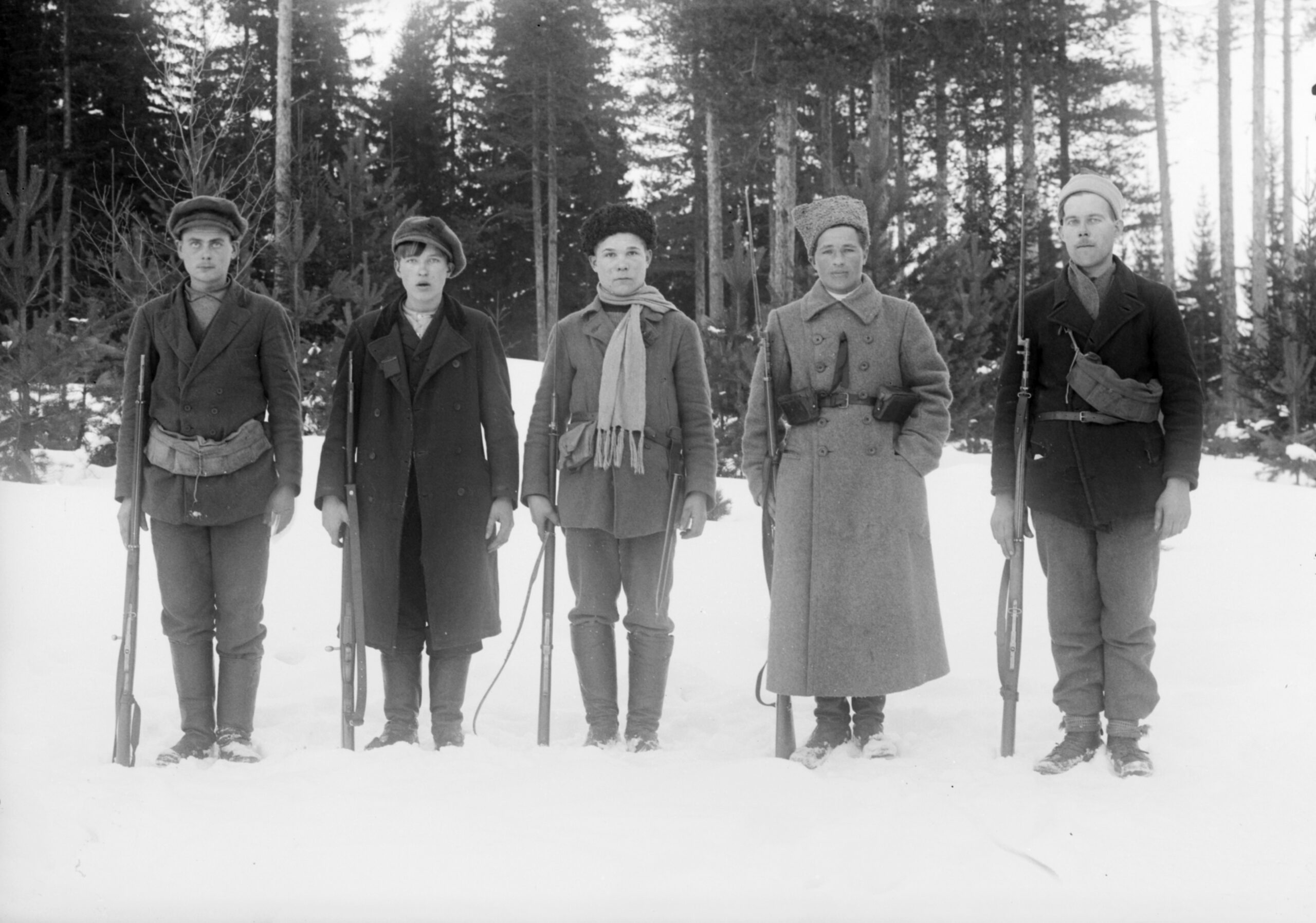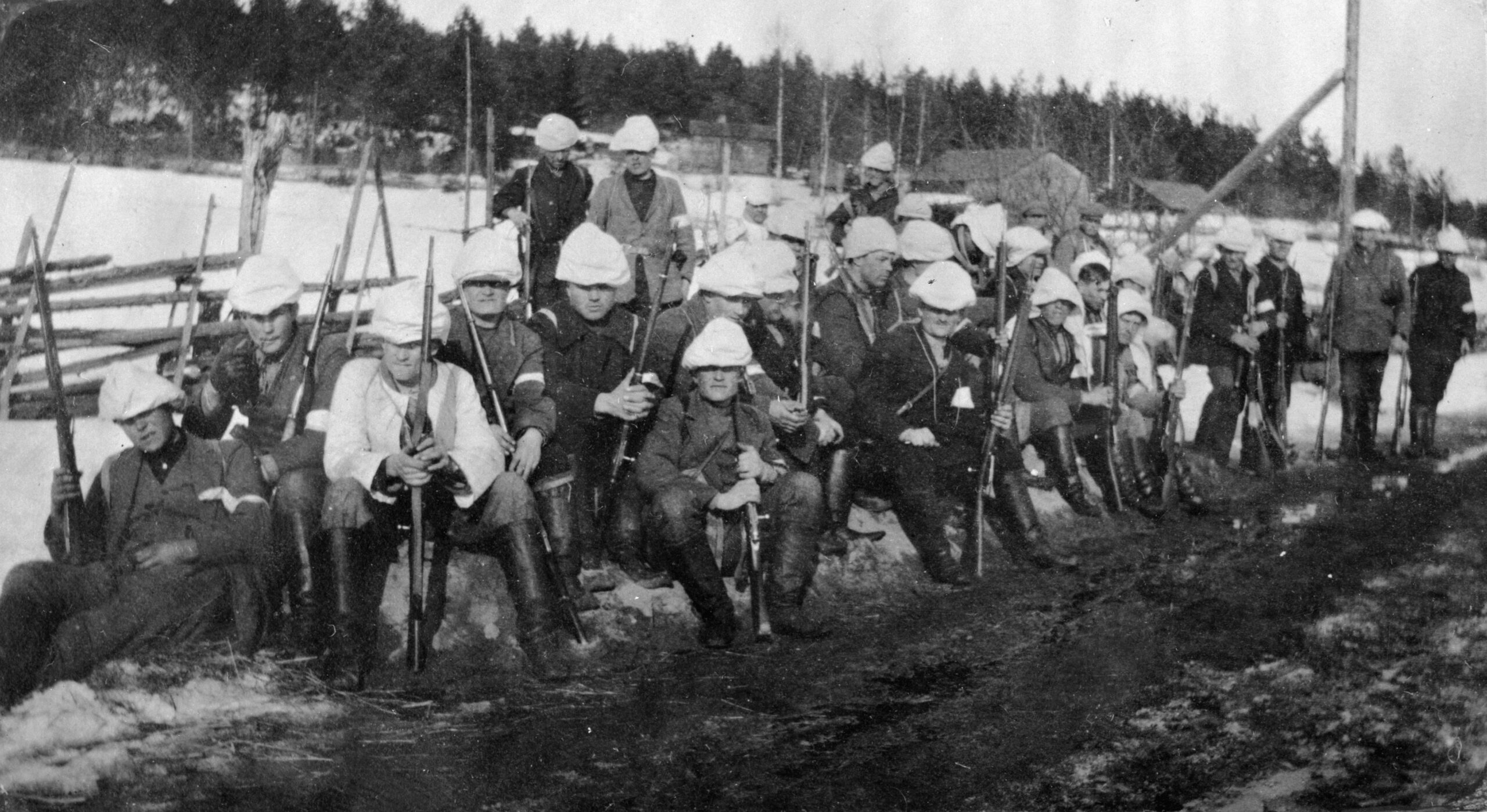At the turn of the century Finland was socially, politically, and economically divided. In the Finnish Civil War, the two opposing sides were called the Reds and the Whites. Both sides received support from external powers: The Reds from Russia and the Whites from Germany.
The Reds mainly consisted of urban factory workers, as well as the rural poor, the landless tenant farmers or crofters, who were loyal activists of the labor movement and trade unions. Many of them were members of the Workers’ Guards, which were established in October 1917 when there was no government-provided general law enforcement. The Worker’s Guards had a role in maintaining public order but also aimed to secure the dominance of the left-wing. The more radical elements within the labor movement began to refer to the Guards as the “Red Guards.” Women in the Red Guards usually served in healthcare and support roles. But in the spring of 1918, two armed women’s companies were also established, comprising of nearly 300 women.
After the outbreak of the Civil War, the central leadership of the Red Guards operated rather poorly. Due to the lack of qualified instructors, the training of the Guards was weak. The headquarters of the Red Guard was in Helsinki, but key centers for the Reds were Tampere, Kotka, and Viipuri. In Tampere alone, at least 6,000 men and women joined the Red Guard, consisting of industrial workers, skilled laborers, or craftsmen. The Red Guard took control of Tampere on January 28, 1918, immediately after the start of the war.

The Whites, on the other hand, composed of conservative activists and bourgeoisie who began establishing Civil Guards, also called the White Guards, in numerous parts of the country during the summer of 1917 for various reasons. Establishing Civil Guards was challenging in areas with strong Red support, such as Tampere and its surroundings. Towards the end of the year, the Civil Guards began to unite behind common objectives: removing the remaining Russian military presence from Finland, controlling the Red Guards, and restoring law and order were among the Whites’ goals. Cooperation between the Guards only started functioning after the outbreak of the Civil War. In fact, the sporadic self-initiative of the Civil Guards in January 1918 was one of the factors, that led to the outbreak of the war.
In addition to the Civil Guards, the White Army recruited troops and introduced conscription to ensure a sufficient number of men. A significant part of the leadership of the White Army consisted of voluntarily trained Jaeger soldiers, who had received their training in Germany, and joined in the Civil War in February 1918. The commander of the White Army was General Carl Gustav Emil Mannerheim, who had served in the Imperial Russian army in the past.

The Civil War in Finland could be described as a war of amateurs. Both the Reds and the Whites sent badly equipped and poorly trained troops to the front lines. Many soldiers fought in civilian clothing, and few had received proper military training. Child soldiers also fought on both sides. There was practically no actual war strategy, and maneuvers were not well-organized. Military logistics were weak, making it difficult for troops to advance.
However, the weapons used were modern. The Reds obtained their weapons from the Russians, while the Whites confiscated weapons from the Reds and received additional supplies from the Germans. Machine guns and artillery, acquired from the Russians and Germans, played a crucial role in many battles. Red armored trains were also significant because the battles were fought near roads and, especially, railways. There was also some aerial activity, with both sides having access to airplanes, although they were mainly used for distributing leaflets and reconnaissance, rather than bombing raids.